
Ltd.
Dormouse Survey
Dr Elizabeth Pimley is carrying out a dormouse survey using tubes to monitor the population. They are not traps as the dormice or other animals can exit them, they merely serve as temporary nesting sites, and are used as a standard survey tool by ecologists.
Elizabeth has been given the tubes to help her survey Leckhampton fields for dormice. She would really appreciate it if the tubes could be left alone and if they have been moved please put them back where they were found as this invalidates the survey.
Bat Walk 2012 - 28th July and 11th August
Dr Elizabeth Pimley has kindly organised another two LEGLAG bat walks this year, download the flyer.
Winter Update
Three woodmouse nests have been discovered in the hedgerow network around Lott's meadow and the small holdings near it, one of which is currently occupied by two adult woodmice. During the LEGLAG Batwalk 18th June one common pipistrelle bat was found roosting in the mature oak tree in Lott's meadow.
BBC Radio 4 Programme on Ecology - Listen to the programme: MP3 Format or WMA Format
First broadcast Thu, 24 May 2012, 21:00 on BBC Radio 4, Presenter Adam Rutherford, Producer: Andrew Luck-Baker, see bottom of page for summary transcript.
Scientists uncover evidence of impending tipping point for Earth - By Anthony Barnosky, professor of integrative biology at the University of California, Berkeley, 7th June 2012 of the journal Nature.
Importance of Wildlife



Please keep in touch!
The presence of rare or endangered plants or animals can be a reason to preserve land in the countryside and could lead to an area being designated a 'site of special scientific interest' or SSSI. The Wildlife and Countryside Act 1981 (as amended) is the principle mechanism for the legislative protection of wildlife in Great Britain. Please report any plant or animal sightings to LEGLAG, email us at [email protected]
Dr Elizabeth Pimley, a member of LEGLAG, has written a note on the ecological value of this area.
Download the records of the wildlife in the vicinity of the development area.
Download a list of the 66 species of birds that have been sighted on LEGLAG land in the last 8 years.
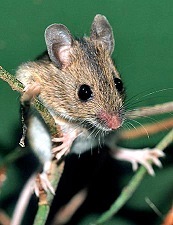
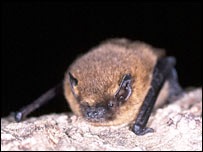
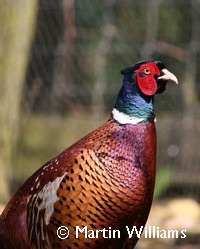
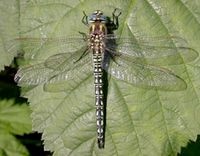
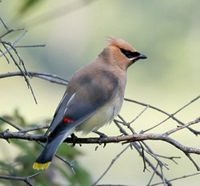
BBC Radio 4 Programme on Ecology - Transcript Extinct!
The International Union for the Conservation of Nature (IUCN) took a 50,000 species sample, this represents 3% of all species of animals and plants on Earth. Professor Anthony Barnosky of the University of California, Berkeley and Georgina Mace, conservation biologist at Imperial College London discuss how 40% of this sample are threatened by extinction and have been red listed, that is those species which are in long term progressive decline or where a species are restricted to small areas and/or have small populations. Currently we have an estimated 3 to 12 times the extinction rates compared to background rates and could be as much as 80 times background rates. The rising curve of extinction rates depends on what we do in the next few decades.
The growing human population is taking habitat. Agriculture in the form of farms and ranges now accounts for 40% of the land. Professor Paul Ehrlich, Stanford, ‘population extinction virtually always precedes species extinctions, most species occur as a wide variety of populations in different places, often evolutionally different populations and what we are doing right now are wiping out huge numbers of populations and we don’t get the same level of species extinctions until we get to the end of the line on each one. So if there is a thousand populations in a species it takes time to wipe out all thousand of them before you’ve lost the species.’
‘The way to see that population extinctions are crucial is to realise that if you could wave a magic wand and say every species on the planet would be preserved as one viable population for the rest of eternity, then the species extinction crisis would be over ... right? and we’d all be dead in a few months because we absolutely depend on a wide variety of populations that run the ecological systems, the eco systems that are supporting our lives. For example, in the US something like 20 billion dollars a year in our agriculture production depends on pollinators. So when you have a collapse on your bee populations that’s going to affect your pollination and hit your economy. Now if we had one population of honey bees in Italy that wouldn’t do a dam thing for pollinating crops in north America. If you had only one population, say of birds of paradise that wouldn’t do much for New Guinea’s tourist industry because you need lots of populations so you can get people out to see them. All the things that we basically want to get from nature with very trivial exceptions depend on having various populations, often large numbers of populations.’
So from a practical point of view Prof. Paul Ehrlich suggests that historically many conservationists have been focused too much on protecting individual charismatic species and missed the bigger picture ...
‘Much more important to us are pollinators and organisms that make our soils fertile and the plants that absorb the carbon dioxide that we are putting too much into our atmosphere and screwing up our climate and so on ... I think the main thing we should be done differently is to inform the public much more about the eco systems services, so they are quite happy to put political support and financial support into protecting entire eco systems. So we should be putting effort into protecting the charismatic species and gigantically higher effort into protecting the systems and populations. Because, you know, you get some jerk sitting in a wall street office who knows nothing about the world and he says why in hell should I protect the pandas. I’m never going to see a panda, I don’t care about pandas, the only thing I care about is boozing and stealing people’s money, typical wall streeter! But, if you say if you don’t protect the eco systems you’re not going to have any food, you’re going to starve, then you can get your message across.’
‘We have a built in audience with self interest in saving the eco systems and the populations, we only have a relatively minor proportion of humanity that really cares about the polar bears, that really care about pandas, that really care about beautiful birds and so on ...’
Is this a moral responsibility?
Prof. Paul Ehrlich again, ‘humanity is carrying out a vast campaign of sawing on the limb it’s sitting on, and the limb we are sitting on of course is all those populations of other organisms that support our lives, so what’s more or less certain is, it’s deeply stupid, so if you don’t have a moral feeling about it then think: don’t you want to belong to a species that acts intelligently rather than stupidly?’
PLEASE JOIN US
The success of LEGLAG has been down to local people getting involved, writing letters or emails to make their views known. More information on membership of LEGLAG
MORE INFO
REPORT IT!
Please report any plant or animal sightings to LEGLAG, email us at [email protected]